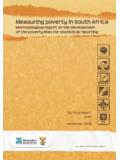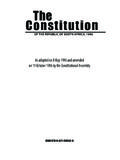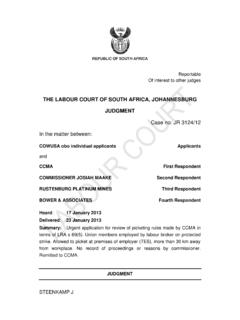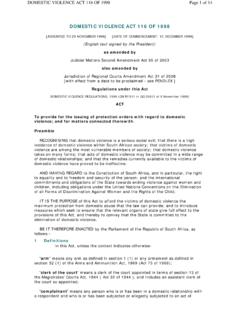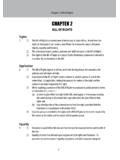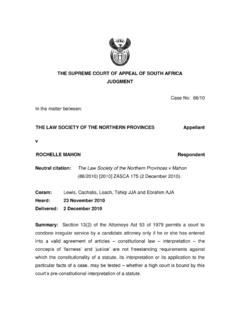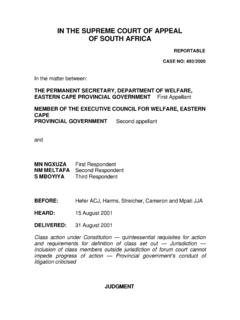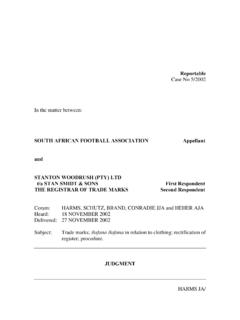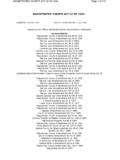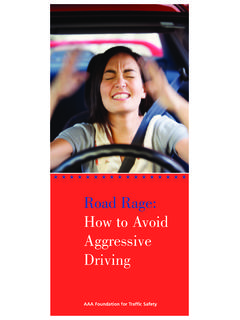Transcription of THE SUPREME COURT OF APPEAL OF SOUTH AFRICA …
1 THE SUPREME COURT OF APPEAL OF SOUTH AFRICA . JUDGMENT. Case no: 607/11. In the matter between: CRAIG WILLIAM GRIGOR Appellant and THE STATE Respondent Neutral citation: Grigor v The State (607/11) [2012] ZASCA 95 (1 June 2012). Coram: Van Heerden, Snyders and Tshiqi JJA. Heard: 16 May 2012. Delivered: 1 June 2012. 2. Summary: Attempted murder self defence must be a balance between the attack and the defence bounds of self defence exceeded sentence not shockingly inappropriate. _____. ORDER. _____. On APPEAL from: North Gauteng High COURT , Pretoria (Msimeki J and Mabuse AJ sitting as COURT of APPEAL ): The APPEAL against the conviction and the sentence is dismissed. _____. JUDGMENT. _____. TSHIQI JA (VAN HEERDEN AND SNYDERS JJA CONCURRING). [1] The appellant in this matter was convicted by the regional COURT magistrate, Benoni, on a count of attempted murder and was sentenced to six years' imprisonment. He appealed to the North Gauteng High COURT , Pretoria, leave having been granted by the regional COURT magistrate, against both the conviction and sentence.
2 His APPEAL to the high COURT was dismissed. His APPEAL is now before us, with the leave of this COURT , against both the conviction and sentence. 3. [2] The APPEAL arises from a road rage incident that occurred on 11 January 2008. along Kirshner Road, Benoni, between the appellant and the complainant. Before the incident the complainant had just made a u-turn in a drive-way and then entered the road when, according to him, he noticed the vehicle driven by the appellant flying up'. behind him in the same direction. It overtook him. Whilst so driving, an exchange of gestures, consistent with both their perceptions that each had driven in an unacceptable manner took place between them. Their respective versions on what really occurred differ. At some stage they both alighted from their respective motor vehicles. [3] The appellant testified that he stopped his motor vehicle first and made what he called an emergency exit'. He advanced towards the complainant's vehicle which was parked behind his and stopped next to the rear fender of his own vehicle.
3 The complainant also alighted from his own vehicle and advanced towards the appellant and pushed him. The only inference to be drawn from their behaviour at this stage is that they were both angry and ready to confront each other. Consequent to this, a fight ensued between them, during which the appellant inflicted several stab wounds on the complainant with a knife. At the time the appellant was not only armed with a knife but also had a fire-arm, which he did not use. The complainant was unarmed. There were no independent witnesses to the fight. 4. [4] After the fight the complainant drove home and was, shortly thereafter, hospitalised and had to be sutured and to undergo surgery. The medical report completed by an authorized medical practitioner (J88) and which was submitted as evidence notes the following clinical findings on admission: Stab wounds (multiple) on the face, chest, abdomen, (R) thigh , facial wound sutured in casualty, patient referred to surgeon on call, patient was taken to theatre'.
4 Dr Malanda who had completed the J88 was called to testify. He described the stab wounds as a deep laceration on the face, a big laceration on the right thigh which was deep, involving the muscles on the middle aspect of the leg. He sutured the facial wound himself. He described the wound on the abdomen as a deep wound below the ribs which penetrated the abdomen. He was not able to repair this wound and decided to refer it to a surgeon. Dr Snyders, the surgeon, testified and confirmed Dr Malanda's evidence pertaining to the nature of the wounds. Both doctors stated that several of the injuries were so serious that the complainant could have died from bleeding if he had not received medical intervention. [5] The defence raised by the appellant was that he stabbed the complainant in self defence. In order to succeed in his defence the appellant had to show, first, that the defensive act was necessary in order to protect himself and also that there was a reasonable relationship between the attack and the defensive act.
5 5. [6] The gist of the appellant's evidence was that the complainant was the aggressive party in that he was rude towards him from the moment they met and continued to be aggressive after they had both alighted. During the fight, so stated the appellant, the complainant continued advancing towards him unabated even when he showed him the knife, also after he had stabbed him for the first time, and also after he inflicted the several other stab wounds on him. The complainant blamed the appellant as the aggressor. He admitted that he was annoyed at the manner in which the appellant had been driving and that he used rude sign language towards the appellant to express his irritation, but denied that he was aggressive. He also agreed that he pushed the appellant after they had alighted from their respective vehicles. He denied the further aspects of the appellant's evidence suggesting that he continued to be aggressive and to attack him during the fight.
6 [7] Both the appellant and the complainant sought to blame each other for the manner in which the incident progressed and ultimately led to the injuries to the complainant. The trial COURT was as a consequence left with two conflicting versions on the facts. The proper approach for the trial COURT in such a case was to make a determination whether in light of all the probabilities, cumulatively, the State had proved the guilt of the accused beyond a reasonable doubt. This the magistrate did and in so doing correctly rejected the version of the appellant as improbable to the point of not being reasonably possibly true for the reasons that follow. 6. [8] The complainant admits that he was the one who started the fight by pushing the appellant. It is not necessary to analyse what he sought to achieve in doing so because, whatever it was, it is clear that he was motivated by his own anger at that stage. However, it must have dawned on the complainant very soon after he had initiated the fight that the odds were against him when the appellant produced a knife which he, according to him, showed to the complainant.
7 That the complainant would continue to advance towards a man carrying a knife and continue attacking him whilst he was being stabbed, whilst he himself did not possess any weapon is difficult to believe. Even according to the evidence of the appellant, the knife was always in his possession. There was no evidence that the complainant overpowered the appellant at any stage. [9] The most damning objective evidence against the appellant is the severity of the injuries sustained by the complainant. Dr Malanda described the wound in the abdomen as really deep'. Dr Snyders stated that the particular laceration was such that one of the complainant's ribs was also severed. According to him such injuries were sustained through severe force. That medical evidence alone shows that the appellant applied force that was far beyond what was necessary to avert any form of attack by the complainant. It also controverts the evidence of the appellant that the injuries were sustained because the complainant kept on advancing towards him whilst he was holding or swinging the knife in front of him.
8 It also has to be taken into account that the appellant did not sustain any injuries during the fight. 7. [10] C R Snyman Criminal Law 5ed (2008) at 109 states that it is not feasible to formulate the nature of the relationship which must exist between the attack and the defence in precise and abstract terms and that the requirement that there must be a relationship between the attack and the defensive act is in practice a matter of fact rather than of law. The learned author states correctly, in my view, that there ought to be a certain balance between the attack and the defence, after all, he says, you may not shoot and kill another person who strikes you with a fly swatter'. At best for the appellant, the threat he was faced with was a threat of assault. The use of the knife in retaliation and the manner in which it was used was disproportionate. Even if he was angry and wanted to retaliate and confront the complainant, there is no basis to find that he was justified in using the knife nor the consequent force he used in stabbing the complainant.
9 That the knife was used repeatedly to inflict multiple stab wounds is telling. There was, after all, no imminent threat to the appellant's life to justify the use of such force. The actions of the appellant in the premises exceeded the bounds of self defence. [11] The facts of this matter, even on the appellant's version, show that he had several other harmless means he could have adopted to avoid a physical confrontation. He could have driven off and ignored the complainant. When this option was explored with him he stated that he had stopped there to avoid the complainant because he realised that the complainant was unhappy that he, the appellant, had overtaken him. He also testified that he stopped because he was close to his work place and did not want the complainant to see his work place for fear of his safety. This explanation is 8. implausible. It is nonsensical for the appellant to suggest that he would have stopped his vehicle, alight from it hastily and advanced towards the complainant if he simply wanted to avoid him.
10 [12] When the appellant was asked to explain why he made an emergency exit' from his vehicle, he stated that whilst driving he had slipped into an embarkment which was 250 millimeters high and that his wheels were stuck against the embarkment such that he would not have been able to drive away from the scene. Later on during the trial his own witness, also his employer, stated that the spot was a slope and not an embarkment and that one would probably turn a sedan there easily without causing damage to the vehicle. Even if appellant's version that he had driven into an embarkment is accepted, he could have simply remained in his vehicle. [13] There is accordingly no basis to interfere with the reasoning of the magistrate. As it is uncontroverted that the injuries inflicted were such that the complainant would have died if he had not received medical intervention, the conviction of attempted murder (the form of fault being dolus eventualis) also stands.
